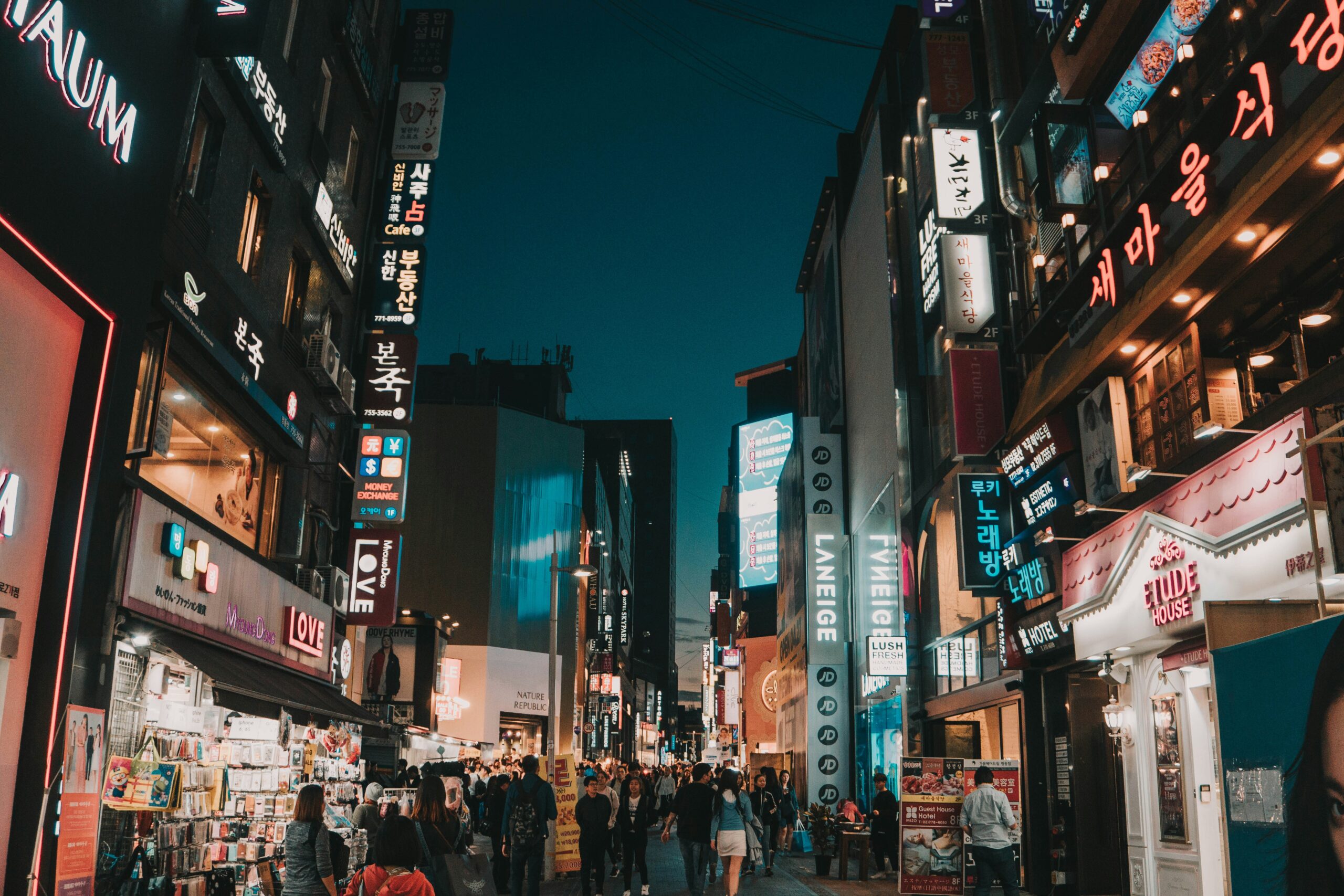The Legality Behind South Korea’s Rise in Media
Share

Image Credits: @shawnanggg on Unsplash (Unsplash License)
Introduction
Movies and entertainment have become a key feature of modern-day society, with technological advances making global access to film and television easier than ever. When it comes to “good entertainment,” most people’s minds immediately jump to Hollywood, picturing the glitz and glamor of the most iconic place for film. However, recent developments show that there is a formidable rival to Western media rising up in Eastern Asia. From the Oscar award-winning film Parasite, to the worldwide sensation BTS, it is no mystery that South Korea has made huge splashes in the international sphere within the last few decades. With its growing global presence, South Korea has become the center of cultural attention in the media. Cultural aspects of the country, such as K-Pop, Korean films, and Korean food, become increasingly celebrated as more of the world falls in love with its culture. However, South Korea did not always hold such global significance. In the past several centuries, South Korea’s media landscape has undergone significant transformation through various legal developments.
Historical Context
Initially, South Korea experienced severe legal restrictions and censorship tactics under colonialist regimes. During the 18th century, South Koreans suffered from a period of harsh Japanese occupation in which millions of South Koreans suffered from cultural suppression. Japanese military laws like the “Sōshi-kaimei” enforced stiff restrictions on citizens, forcing all Koreans living under annexation to use solely Japanese names and the Japanese language in education and daily life. The Japanese government not only enforced cultural suppression but also imposed major censorship laws, which prohibited South Korean news, as well as any other forms of Korean media. South Korean media was non-existent under the Japanese colonial government; Japanese officials forced all Korean newspapers to shut down, and they arrested any reporters or journalists who showed any type of dissent towards the Japanese regime. The shutdown of all non-propaganda news began a “dark era” within South Korea, where citizens went years without any access to uncensored news and media. When South Korea was formally liberated in 1945, a period of significant political and economic transformation began under President Park Chung-hee’s rule.
The formal liberation of South Korea sparked celebration, as many South Korean citizens believed a new era of unbridled freedom would begin. However, the post-colonial era introduced new challenges. One of the main issues in this transitional period revolved around establishing a stable government to govern the newly independent nation. Following its liberation, South Korea introduced its first presidential system and elected President Syngman Rhee, an anti-Japanese freedom-fighter, who shook the nation with his controversial policies. The administration implemented strict control over the media as part of a broader strategy for modernization and economic development. In an effort to foster stability and concentrate power as a post-colonial state, President Rhee curtailed press freedom and tightly regulated media, which included monitoring film production and other forms of media expression. Additionally, he mobilized cinema and other media outlets as tools to sustain Cold War mobilization, militarism, and political centralism. Cinema, like other mobilization strategies, served the purpose of molding public opinion in support of a centralized government, enabling the government to rally citizens to its advantage.
Throughout the 20th century, these censorship trends continued under President Park Chung-hee. He continued enforcing strict measures, expanding on laws that he previously established, and even going as far as tightening control on some laws. Like President Rhee, President Park’s goal was ultimately to strengthen South Korea’s media and advance the country to keep up with its Western counterparts. During this time, South Korea was still struggling to establish its position as a competitive country in the global sphere. This was mostly due to the remnants of post-colonialism which resulted in an inevitably weaker foundation for South Korea to build its economic wealth and military power on compared to that of the United States or other countries in the European Community (EC).
The Result of Political Changes
As the government continued its censorship, fierce debates arose on the effectiveness of such mobilization strategies. Many Korean nationalists believe that censorship under Rhee and Park’s regimes was a blatant human rights violation against citizens. In particular, experts point to policies like the Motion Picture Law of 1962, which limited the number of domestic Korean film companies from 71 to 16, putting many Korean directors, producers, and members of the entertainment industry at risk. While these concerns are valid, other impacts of censorship suggest an unexpected, positive consequence.
One unforeseen outcome of censorship in Korean media is that certain aspects of media policies led to the foundation for South Korea to become a modern global media power. Today, South Korea’s domination of the global media sphere can be seen as a source of soft power which helped them break into the Western world. The origin of this soft power can be traced back to the importation laws that established quotas for the importation of Western films. Though laws like the Motion Picture Law of 1962 led to censorship, it also led to an increase in film production, like Park and Rhee had intended it to.
Additionally, the reforms that Park made during this time also encouraged the South Korean government to continue practices that promoted South Korea’s film industry. For example, in 1997, the Korea Performance Arts Promotion Council streamlined the importation of Western movies to improve on Park’s previous system. Additionally, following the importation of Western media, the Korean government was influenced to extend broadcasting channels and create entertainment programs to entertain the public and promote South Korean media. Television programs like SBS launched music segments such as Inkigayo, which was the first platform to stream Korean music and performances live on television to the general public. These efforts came together to later on develop the industry of K-Pop and K-film, which are now greatly celebrated and enjoyed by individuals around the world.
However, it was only until censorship restrictions were lifted that the Korean culture wave known as Hallyu truly took off. As the government eased domestic restrictions, South Korea’s media industry experienced a surge in creativity and diversity, fostering a dynamic environment in which world renowned films like Parasite and Minari could rise. This newfound freedom, coupled with the improvements in filmmaking resulting from Park’s importation laws, brought about a whole new sphere era of entertainment for South Korea.
Conclusion
Ultimately, the rise of South Korea’s media uniquely exemplified the tricky balance between free speech and the need for global power. While censorship did curtail personal freedoms, the positive consequences of censorship in South Korea demonstrate how such measures may be deemed necessary for a nation to effectively mobilize its resources. In the case of South Korea, though censorship brought about immense criticism and public backlash, it also eventually ended up improving the quality of the country’s media production. Regardless, South Korea’s media truly only took off when the government committed to a total shift towards democracy, which ultimately proves the vital nature of free speech and non-censorship in media production.


Want to get involved?
Connect with us! Connect with us!